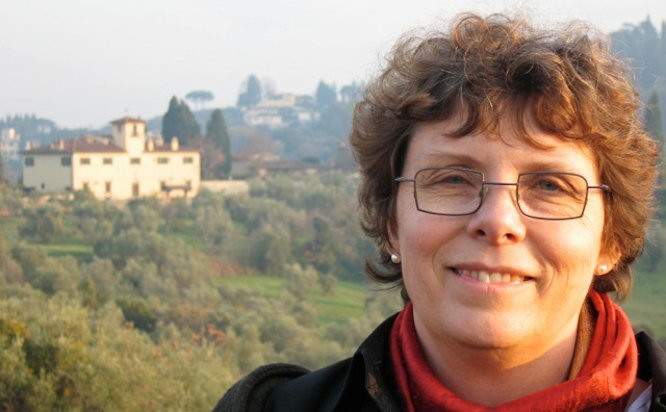Questions for Gillian Crampton Smith

On Saturday Gillian Crampton Smith opens the last conference day with a keynote titled ‘Is there a Language of Interaction Design‘. We asked her three questions.
You will be speaking to an interaction design conference. So how would you introduce yourself to this community?
In the early 80s I thought I could write a computer program to automate some of the laborious and error-prone parts of my work as a magazine designer. We bought an Apple II and I set to and built myself a tool. I managed to make inputting information so fast that I realized I had to slow it down or I would make mistakes. It made me more interested in the art of making a program fluid to use than the program itself.
With this experience I could see how the ordinary skills and knowledge of a graphic designer—the analysis and organization of information, the design of its visual form to be legible and appropriate— could easily improve not only the aesthetic qualities of software but also its efficiency. I realized, too, that there was an aesthetic pleasure, of course, in something that looks and feels good but also in something that works well.
What is the main topic, issue or challenge you have been working on recently?
For the past 8 years Philip Tabor (an architect) and I have been teaching interaction design in Venice. Venice throws into high relief the problems of designing new technologies for old societies. (Culture changes much more slowly than technology.) We have been encouraging students to think about the social effects of what they design: can they design things that will increase social capital not reduce it. Can they design things that will sit gracefully in a city as old and as beautiful as Venice? Can they design things that might address some of the pressing problems of the city? Can they design things that are not universal but rooted in a particular space or place? Can we educate students to have their feet on the ground and their head in the clouds?
Can you share with us something about what your keynote will address?
The craft of artist designers (as opposed to engineer designers)—is to design an artefact that both functions—a house that stands up, a toaster that toasts bread—but also communicates. Not just what it is and how to use it but what it means to people. We read the difference between a house and a hospital, a medicine bottle and a perfume bottle. There is a language of architecture, of products, of graphic communication that people may not be conscious of but they read it. Is there yet a language of interaction design? and if so, can we teach it to our colleagues?
